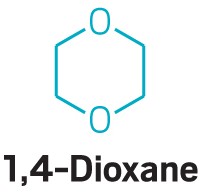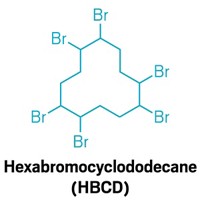Advertisement
Grab your lab coat. Let's get started
Welcome!
Welcome!
Create an account below to get 6 C&EN articles per month, receive newsletters and more - all free.
It seems this is your first time logging in online. Please enter the following information to continue.
As an ACS member you automatically get access to this site. All we need is few more details to create your reading experience.
Not you? Sign in with a different account.
Not you? Sign in with a different account.
ERROR 1
ERROR 1
ERROR 2
ERROR 2
ERROR 2
ERROR 2
ERROR 2
Password and Confirm password must match.
If you have an ACS member number, please enter it here so we can link this account to your membership. (optional)
ERROR 2
ACS values your privacy. By submitting your information, you are gaining access to C&EN and subscribing to our weekly newsletter. We use the information you provide to make your reading experience better, and we will never sell your data to third party members.
Chemical Regulation
US EPA lacks data to support chemical evaluations
Advisory committee, numerous stakeholders criticize latest risk assessments
by Britt E. Erickson
November 7, 2019
| A version of this story appeared in
Volume 97, Issue 44
A US Environmental Protection Agency scientific advisory committee has blasted the agency for relying on inadequate data to evaluate chemicals under the Toxic Substances Control Act (TSCA). TSCA covers the production, importation, use, and disposal of chemicals.

So far, the committee that peer-reviews chemical assessments under TSCA has finalized reports on the EPA’s draft evaluations of three chemicals—the colorant pigment violet 29, the industrial solvent 1,4-dioxane, and a group of cyclic aliphatic bromide flame retardants that includes hexabromocyclododecane (HBCD). All three assessments lack toxicity and exposure data to support the agency’s conclusions, the committee says.
The EPA is in the process of evaluating 10 chemicals, which it selected from a list of 90 that were on the market in November 2016. In the 3 years since selection, the agency has not requested additional toxicity data from chemical manufacturers. Instead, it claims that its evaluations use “information that EPA possesses, or can reasonably generate, obtain, and synthesize for use in risk evaluations, considering the deadlines for completing the evaluation.”

The EPA has released draft evaluations for 6 of the 10 chemicals, and it expects to release two more by the end of the year. The agency plans to release the remaining two in January. Under revisions to TSCA enacted in 2016, the EPA must finalize all 10 by June 2020, 6 months later than initially expected.
In several of the evaluations released so far, the agency ignored risks to the general population, claiming that other statutes, such as the Clean Air Act or Clean Water Act, sufficiently address such risks.
The EPA’s omission of consumers and the general population in its evaluation of 1,4-dioxane “is inappropriate” unless such risk assessments have been completed by other parts of the agency, some review committee members stated in a report released Nov. 1. The chemical is present in plastics and other consumer products, and it contaminates many drinking-water sources. “If risks have been assessed by other program offices of EPA then the agency should present them as part of the underlying data,” the committee says in its report.

The EPA has received similar criticism from environmental groups regarding its evaluation of the solvent and degreaser 1-bromopropane. In that assessment, the agency claims that general population exposures are outside the scope of the evaluation because other regulatory programs manage such risks. The EPA uses the same argument in two recently released assessments of the solvents methylene chloride and N-methylpyrrolidone (NMP).
Environmental groups have also criticized the EPA for excluding exposure data associated with demolition and disposal of products containing HBCD, which is no longer manufactured in the US but still exists in previously made products. “HBCD is still ‘used’ in textiles, electronics, car seats, and other products that are found in homes and vehicles across the country, and those products are still ‘disposed of’ in large volumes, contributing to human and environmental exposures to HBCD regardless of whether the chemical is currently manufactured for such uses,” 10 environmental groups say in an Aug. 30 letter to the EPA.

Although the EPA did find unreasonable risks associated with some uses of 1,4-dioxane, 1-bromopropane, methylene chloride, and NMP, environmental groups claim that the agency downplayed the extent of those risks by assuming that all workers wear proper personal protective equipment, including respirators and gloves. Any regulations to control such risks will therefore not sufficiently protect people who handle the material, they say. For both 1,4-dioxane and 1-bromopropane, “EPA has grossly understated the risks” for both cancer and noncancer health effects, Richard Denison, a lead senior scientist at the Environmental Defense Fund, says in an Oct. 13 blog post.
In general, the chemical industry supports the EPA’s implementation of TSCA. However, the Halogenated Solvents Industry Alliance (HSIA), which represents manufacturers and commercial users of methylene chloride and other halogenated solvents, advocates for the continued use of methylene chloride–based paint strippers in commercial applications.

The HSIA is likely to challenge the EPA’s methylene chloride assessment, which found unreasonable risks for dozens of uses, including commercial paint stripping. The group was hoping that the EPA would propose a rule that would certify commercial contractors and allow them to use methylene chloride, “a product that they have used successfully for years,” says Faye Graul, the HSIA’s executive director.
The EPA’s TSCA advisory committee will review the methylene chloride assessment at a Dec. 3–4 meeting and the NMP assessment at a Dec. 5–6 meeting.





Join the conversation
Contact the reporter
Submit a Letter to the Editor for publication
Engage with us on Twitter